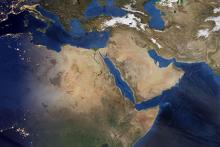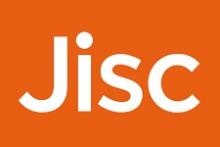'Seismic shift' in research across MENAT region

Clarivate has released a report that explores the 'seismic' shift of the research landscape in 19 countries across the Middle East, North Africa and Turkey (MENAT) region over recent decades. It presents an international success story, with the region’s global share of research output quadrupling from 2 per cent to 8 per cent over the last 40 years, and papers from 22 million individual researchers identified within the region between 2008 and 2017.
The latest Global Research Report from the Institute for Scientific Information (ISI) uses data from the Web of Science to demonstrate how MENAT research is growing in volume and impact, driven by increased participation in international research networks. One example is Egypt which has achieved rising impact at scale, with 60 per cent international collaboration and a Category Normalized Citation Impact (CNCI) above world average. The report also points to a changing regional balance over time – for example, finding that Iran has surpassed Israel and Turkey to become the largest research producer among MENAT countries, increasing its world share of the Web of Science literature from 0.2 per cent in 2000 to 2.3 per cent in 2019.
To put the region’s research contribution into global context, ISI conducted a special analysis of MENAT research output mapped against the United Nations Sustainable Development Goals (SDGs). Out of 819 SDG-related topics identified, MENAT countries have authored at least one paper in 253 topics (31 per cent). For most of the MENAT countries, public health and epidemiology is the most frequent topic for publication and accounts for more than one-quarter of their SDG-related papers. However, there are also visible regional sustainability priorities: sustainable economic growth and biogas are hot topics in Turkey, while soil erosion is especially strong in Iran.
The increasingly international scope of the MENAT regional research base is seen in its researcher mobility and collaborations. The report analyses researcher mobility both within the region and globally, finding that there is a significant outward flow of talent, with North America and Europe being the most popular destinations. It draws attention to the opportunity for more local collaboration within the region, where domestic mobility is relatively low and purely domestic papers currently account for about 5 per cent of total output. The findings highlight how collaboration within the region as well as with the rest of the world will enhance the quality of scientific research, accelerate access to new markets and allow the financial costs of research to be shared – more effectively meeting the economic and societal challenges the region faces.
Martin Szomszor, director at the Institute for Scientific Information at Clarivate said: 'The data indicate that MENAT research shows high levels of global collaboration, resulting in diverse and high-quality output with rising impact. However, regional collaboration remains relatively low and fragmented and our analysis suggests that a collaborative regional network could improve competitiveness between the region and the rest of the world by focusing on shared needs and international priorities.'
Joel Haspel, SVP Strategy, Science at Clarivate, added: 'At Clarivate we know that the trusted insights and analytics we provide will help to accelerate the pace of innovation, and our Global Research Reports are a key part of that for the international research community. The period of exceptional growth and impact that this report examines is unsurprising given the MENAT region’s history of deep commitment to knowledge and learning. Given these countries’ rich human capacity and available resources, as well as the clear evidence of improvement presented in this report, one may hope to see further advances in science and technology for the region in the future.'








